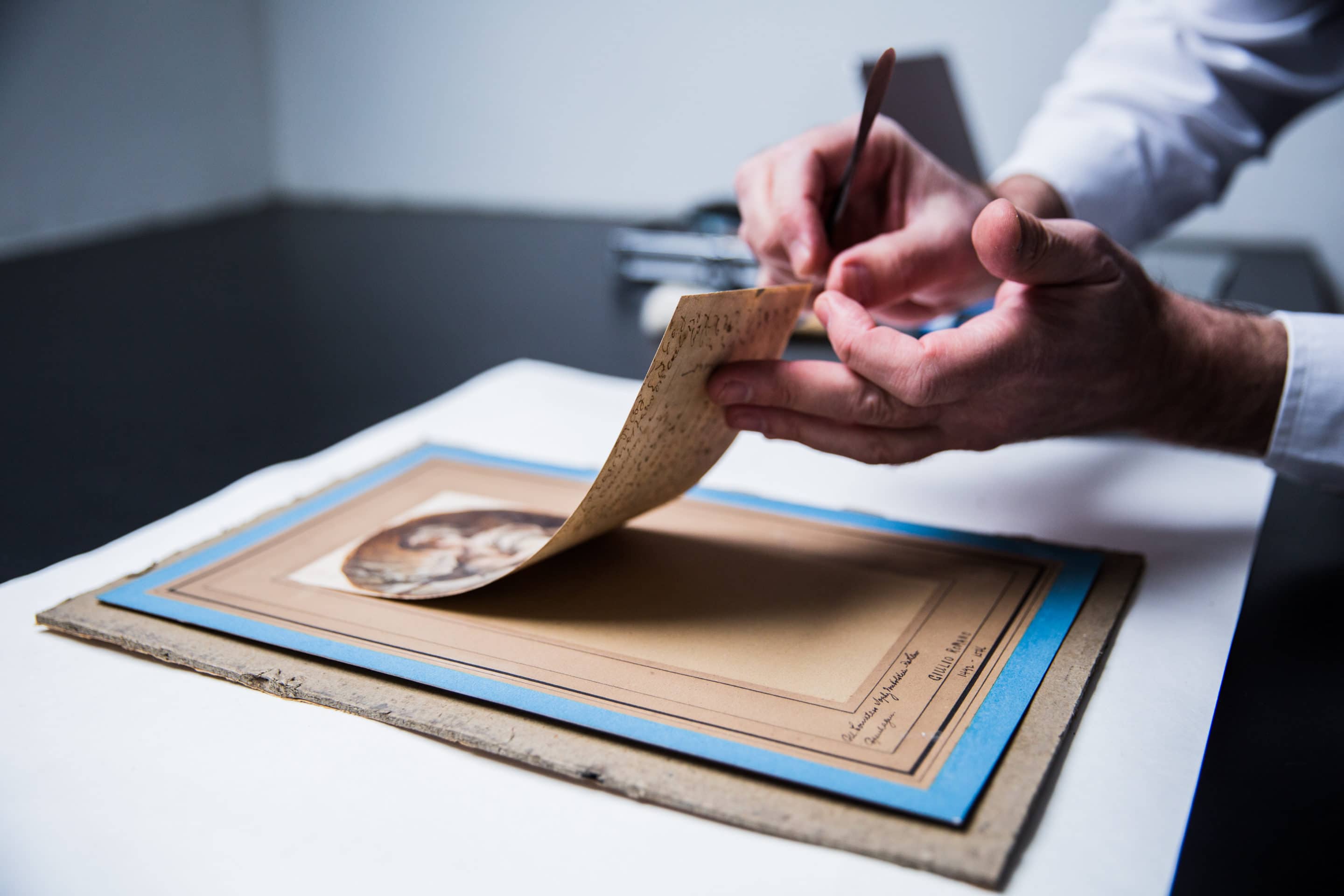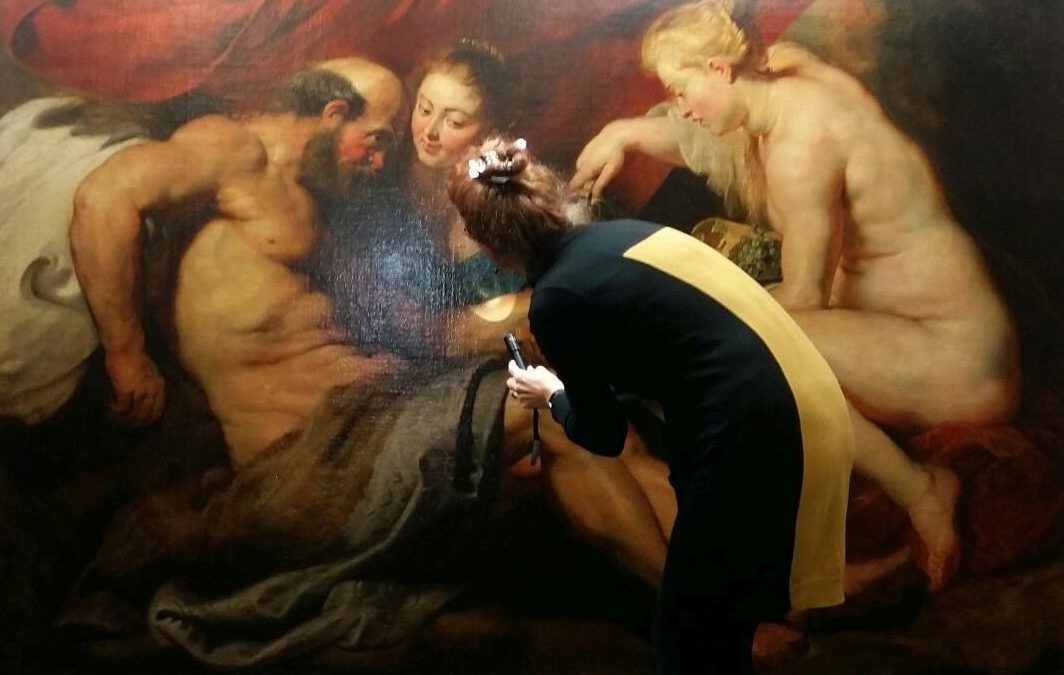Whether art is acquired as an investment or simply for pleasure, it is imperative that the right choices are made to protect the increasingly diverse and valuable artefacts found in the collections of private individuals. Choices made about display, transport, security, domestic cleaning and conservation will positively or negatively impact upon the short and long-term condition of a work of art, and likely play a key role in determining its value on the open market.

Auctioneer Helena Newman at Sotheby’s evening sale of Impressionist and modern art in London
Many of the risks to works of art are not new, however some of these age-old threats are exacerbated by the international lifestyles of today’s collectors and the global nature of the art market. Before the 1990s there were only 50 art fairs and biennials: today there are over 300 taking place on an almost daily basis around the world, attended by collectors from every corner of the globe. Most galleries now conduct about 40-50% of their sales at art fairs, with the result that a work of art or piece of furniture may have to make two, or more, complex overseas journeys for a transaction to take place.
Shipping, even with today’s increasingly sophisticated methods of packing and crating, always carries with it a risk, with the fine art insurance sector citing damage in transit as the most commonly encountered source of claims.
Using a trusted logistics company is a must, however even when using a reputable shipper it is prudent to adequately insure against loss or damage.
For Independent Fine Art Loss Adjuster Paul Britton:
“Transit-related damage accounts for around 50% of my case-load at any one time. An artwork will usually pass through a number of parties hands during an international transit. Typically, this may entail collection from the property, delivery to a central warehouse, crating, handing by an export agent, customs authority, airline, import / receiving agent, road transit to another warehouse and finally road transit to end destination. There are many links in the chain and achieving a consistent level of care throughout the process can sometimes be problematic. Condition reports (with photographs) at the start and end destinations are highly recommended.”

The importance of a condition report cannot be underestimated
A condition report carried out by a professional conservation company like Plowden & Smith is essentially a written assessment of an object’s structural and surface condition at a certain moment in time. It is a wise precautionary measure to avoid costly mistakes prior to purchasing a work of art (where it may reveal the presence of restoration, retouching, or chemical composition that is inconsistent with the purported date of a piece), and also in situations where there is an increased risk of damage, for example during transit.
Whilst the number of items damaged during shipping is a small fraction of all those in transit at any one time, accidents do unfortunately happen, which is why so many collectors are keen to explore solutions that allow them to reduce the amount of times they need to ship valuables.

Salvador Dali limited edition print showing heavy foxing, caused by a flood in the owner’s basement

One of Plowden & Smith’s more glamorous projects – the 1960s super yacht Northwind II features Maison Jansen interiors
If anyone knows about the risks of displaying art on board yachts it is Pandora Mather-Lees, founder of the training course, ‘The Practical Care of On Board Art Collections’.
An art historian by training, Pandora became involved in this specialist field of preventive conservation on the high seas after she started to offer art appreciation courses to the crews of superyachts. By interacting with superyacht owners and their crews she quickly saw the need to train staff on how to handle and care for fine and valuable objects.
Pandora recalls the occasions when a champagne cork hit a painting during a crew party and a lampshade made of skin and valued at £90,000 was damaged by staff throwing cushions from the deck into the saloon area.
She also recounts the time a crew attempted to install an iconic Anish Kapoor sculpture on board a superyacht:
“They unwittingly made a thumb print on the highly sensitive polished mirror surface. Unaware of the characteristics of the work they made matters worse by trying to eliminate the marks. Ultimately the work had to be returned to the studio at significant cost to be re-polished and returned. At a later time, the surface corroded when the piece ended up being [inappropriately] stored elsewhere on the vessel.”
Even seemingly strong and absorbent materials are vulnerable. Pandora cites the time a Jan Frydrych crystal sculpture was chipped when a stewardess placed it on the floor, and another time when a crystal sculpture was ruined in the dishwasher.
“Staff will be unfamiliar with creators and characteristics of their practice [and] cannot be expected to have such depth of knowledge but should ask questions and with better co-ordination between the supplier, the shipper, the owner and those on board, these issues can, in the main, be averted.
For Pandora, training senior staff is just as important as training crew because some of the most effective means of protecting valuables goes against commonplace superyacht management practices, for example “When staff are idle, their superior will ask them to clean something to look busy – a mistake as overcleaning is more responsible for damage than under cleaning. Crew should limit handling, use the least invasive and dry methods first when cleaning and conduct a risk assessment at the outset.”

The damage to this Sabino Paris art deco lampshade was caused by being knocked over at a party
Steps To Taken If and When Accidents Happen
This article was first published by Family Office Magazine in the Autumn 2019 issue of their magazine’s Art and Museum supplement.
For more information about the conservation services described in this article, please telephone the Plowden & Smith office on +44 (0) 20 8874 4005 (Monday to Friday 8:30 – 17:00) for an informal and no-obligation discussion about your requirements. Alternatively, please email info@plowden-smith.com
For other services, described in this article please see contact details below:
Family Copies: +44 (0)20 7373 5499
Fortecho Solutions: +44 (0) 20 7736 3330
Pandora Art Services: +44 (0)7584 149370
Paul Britton Loss Adjuster: +44 (0)1494 728763

